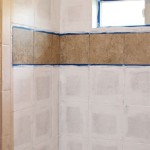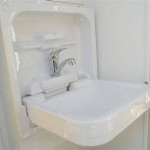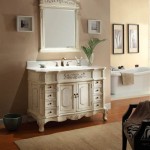Bathroom Vanity Furniture Sinks: A Comprehensive Guide
Bathroom vanity furniture sinks form a crucial element of any bathroom design. These sinks are not simply functional fixtures; they significantly contribute to the aesthetic appeal and overall functionality of the space. Selecting the right vanity sink requires careful consideration of various factors, including size, style, material, installation type, and budget. This article offers a detailed exploration of bathroom vanity furniture sinks, providing key information necessary for making informed decisions.
Understanding the Function and Purpose
The primary function of a bathroom vanity sink is to provide a designated area for washing hands, face, and performing other hygiene-related tasks. However, its role extends beyond basic utility. A well-chosen vanity sink enhances the visual appeal of the bathroom, complementing the vanity cabinet and other fixtures. The sink's design can influence the overall style, ranging from traditional to contemporary, minimalist to ornate. Furthermore, the sink's material and construction impact its durability and ease of maintenance. Therefore, the selection process should factor in both practical needs and aesthetic preferences.
Beyond their individual function, vanity sinks work in tandem with vanity cabinets to provide storage solutions. The cabinet beneath the sink often houses plumbing, cleaning supplies, and other bathroom essentials, contributing to a more organized and clutter-free environment. The combination of a stylish sink and a functional cabinet creates a cohesive and practical bathroom space.
Exploring Different Sink Styles and Installation Types
Bathroom vanity sinks are available in a wide array of styles, each offering unique aesthetic and functional characteristics. The installation type further differentiates the options, impacting the overall look and ease of fitting.
Undermount Sinks: These sinks are installed beneath the countertop, creating a seamless transition and maximizing countertop space. They offer a clean and modern aesthetic and are easy to clean as there is no rim above the counter surface to trap dirt and grime. However, undermount sinks require a solid surface countertop like granite, quartz, or marble, as the edge of the countertop is exposed.
Vessel Sinks: Also known as above-counter sinks, vessel sinks sit atop the vanity countertop, resembling a decorative bowl. They are offered in diverse shapes, sizes, and materials, providing a statement piece for the bathroom. Vessel sinks often require less complex plumbing installations and can be paired with a wider range of countertop materials. However, they can raise the overall height of the vanity, which might be a concern for some users.
Drop-in (Self-Rimming) Sinks: These sinks are installed into a pre-cut hole in the countertop, with the rim of the sink resting on the countertop surface. Drop-in sinks are relatively easy to install and can be used with various countertop materials. They offer a classic and versatile look, suitable for different bathroom styles. The rim, however, can collect dirt and grime, requiring more frequent cleaning.
Console Sinks: Console sinks consist of a sink basin supported by legs, typically made of metal. They offer an open and airy feel, ideal for smaller bathrooms. Console sinks often lack storage space, but they can be paired with shelving or other storage solutions to compensate.
Wall-Mounted Sinks: As the name suggests, wall-mounted sinks are attached directly to the wall, without a vanity cabinet or legs. They are a space-saving option, well-suited for small bathrooms or powder rooms. Wall-mounted sinks create a minimalist and modern aesthetic. Plumbing is exposed with this installation, requiring careful consideration of the pipework's appearance.
Integrated Sinks: These consist of a sink and countertop molded as a single unit, offering a seamless and contemporary look. Integrated sinks are typically made of acrylic, solid surface materials, or composite materials. They are easy to clean and maintain, but may be more expensive than other sink options.
Examining Sink Materials
The material of a bathroom vanity sink significantly impacts its durability, aesthetics, and maintenance requirements. Common sink materials include:
Ceramic: Ceramic sinks are a popular choice due to their durability, affordability, and ease of cleaning. They are resistant to stains, scratches, and heat. Ceramic sinks are available in a wide range of colors and styles, making them a versatile option for different bathroom designs. However, they can chip or crack if subjected to impact.
Porcelain: Porcelain is similar to ceramic but is fired at a higher temperature, making it denser and less porous. Porcelain sinks are highly durable, stain-resistant, and easy to clean. They offer a classic and elegant appearance.
Glass: Glass sinks offer a unique and contemporary aesthetic. They are available in clear, frosted, or colored glass. Glass sinks are non-porous and easy to clean, but they can be susceptible to scratches and chips. Special care must be taken when cleaning glass sinks to avoid harsh abrasive cleaners.
Stone: Stone sinks, such as granite, marble, or travertine, offer a luxurious and natural look. Each stone sink is unique, with variations in color and veining. Stone sinks are durable and resistant to heat, but they can be porous and require sealing to prevent staining. They can also be more expensive than other sink options.
Stainless Steel: Stainless steel sinks are durable, hygienic, and easy to clean. They offer a modern and industrial look. Stainless steel sinks are resistant to stains and corrosion, but they can be prone to scratches. They are typically used in commercial or industrial bathrooms, especially where high volume use and easy cleaning are critical.
Cast Iron: Cast iron sinks are extremely durable and heavy. They are coated with enamel, providing a smooth and glossy finish. Cast iron sinks are resistant to scratches, chips, and stains. They offer a classic and timeless appearance but are heavy and require substantial support for installation.
Solid Surface: Solid surface sinks, such as Corian or Swanstone, are made of a blend of resins and minerals. They are non-porous, stain-resistant, and easy to clean, with a repairable surface. Solid surface sinks offer a seamless and contemporary look and can be molded into various shapes and sizes.
Considering Size and Configuration
The size and configuration of a bathroom vanity sink are important considerations, influencing the functionality and space utilization of the bathroom. The sink's dimensions should be proportionate to the vanity cabinet and the overall size of the bathroom. A small sink in a large bathroom may look out of place, while a large sink in a small bathroom can overwhelm the space.
For smaller bathrooms, compact sinks, such as corner sinks or wall-mounted sinks, can be effective space-saving solutions. Larger bathrooms can accommodate double vanities with two sinks, providing ample space for multiple users. This configuration is particularly useful in master bathrooms or shared bathrooms. The placement of the sink within the vanity should also be considered; placing it off-center allows for more countertop space.
The depth of the sink basin is another important factor. A shallow basin may not be adequate for preventing splashing, while a very deep basin might be uncomfortable for some users. The ideal basin depth depends on personal preference and the intended use of the sink. Consider the faucet height, to ensure there is adequate space for handwashing without touching the bottom of the sink.
Finishes, Faucets and Aesthetic Considerations
The finish of a bathroom vanity sink should complement the overall bathroom design. Common sink finishes include polished chrome, brushed nickel, oil-rubbed bronze, and matte black. The choice of finish depends on the style of the bathroom and the other fixtures. Chrome offers a classic and versatile look, while brushed nickel provides a more subtle and modern appearance. Oil-rubbed bronze adds warmth and vintage appeal, and matte black offers a contemporary and dramatic touch.
The faucet selection also plays a crucial role in the overall aesthetics and functionality of the sink. The faucet style should complement the sink style and finish. Faucets are available in a variety of styles, including single-handle, dual-handle, widespread, and wall-mounted. The faucet height and reach should be appropriate for the sink basin to prevent splashing and ensure comfortable use. The use of low-flow fixtures is an ecologically beneficial option as well.
Beyond finishes and faucets, other aesthetic considerations include the shape and texture of the sink. Sinks are available in various shapes, such as round, square, rectangular, oval, and asymmetrical. The texture of the sink can also vary, ranging from smooth to textured. The choice of shape and texture depends on personal preference and the desired aesthetic.
Installation and Maintenance
The installation process of a bathroom vanity sink depends on the sink style and installation type. Some sinks, such as drop-in sinks, are relatively easy to install, while others, such as undermount sinks, require more expertise. It is important to follow the manufacturer's instructions carefully and to ensure that the sink is properly sealed to prevent leaks. Professional installation may be necessary for certain sink types, particularly those involving complex plumbing.
Maintenance of a bathroom vanity sink involves regular cleaning to prevent the build-up of soap scum, hard water stains, and dirt. The cleaning frequency depends on the material of the sink and the level of use. Mild soap and water are generally sufficient for cleaning most sinks. Avoid using harsh abrasive cleaners, as they can damage the sink's finish. For stubborn stains, use a specialized cleaner designed for the sink's material. Properly sealing natural stone sinks regularly is also important to prevent staining and damage.

24 Bathroom Vanity With Single Undermount Sink Combo Storage Cabinet Pull Out Footrest White Modernluxe Target

Magic Home 24 In Modern Bathroom Vanity Storage Freestanding Cabinet With Tip Out Drawer And Single Top Sink Blue Sl Hms6a21460ss The Depot

48 Inch Furniture Style Single Sink Bathroom Vanity

Home Decorators Collection Fremont 32 In W X 22 D 34 H Single Sink Freestanding Bath Vanity Navy Blue With Gray Granite Top Tj Ftv3222blu The Depot

36 Bathroom Cabinet With Sink Soft Close Doors And Drawers Navy Blue Modernluxe Target

Churanty Bathroom Vanity With Sink 36 Storage Cabinet Two Doors And Drawers Solid Wood Frame Metal Handles White Com

Vanities Furniture Style Vs Traditional Cabinet Toulmin Kitchen Bath Custom Cabinets Kitchens And Bathroom Design Remodeling In Tuscaloosa Birmingham Alabama

Vapsint 29 In W X 20 D 27 H 2 Doors Bathroom Vanity Gray With White Ceramic Vessel Sink Va Bc033qh Qd Qg Jlj174a The Home Depot

86 White Freestanding Double Sink Bathroom Vanity Set With Makeup Table Marble Top Homary

Dhp Jamison 24 Industrial Bathroom Vanity With Oval Ceramic Sink Walnut Com
Related Posts







